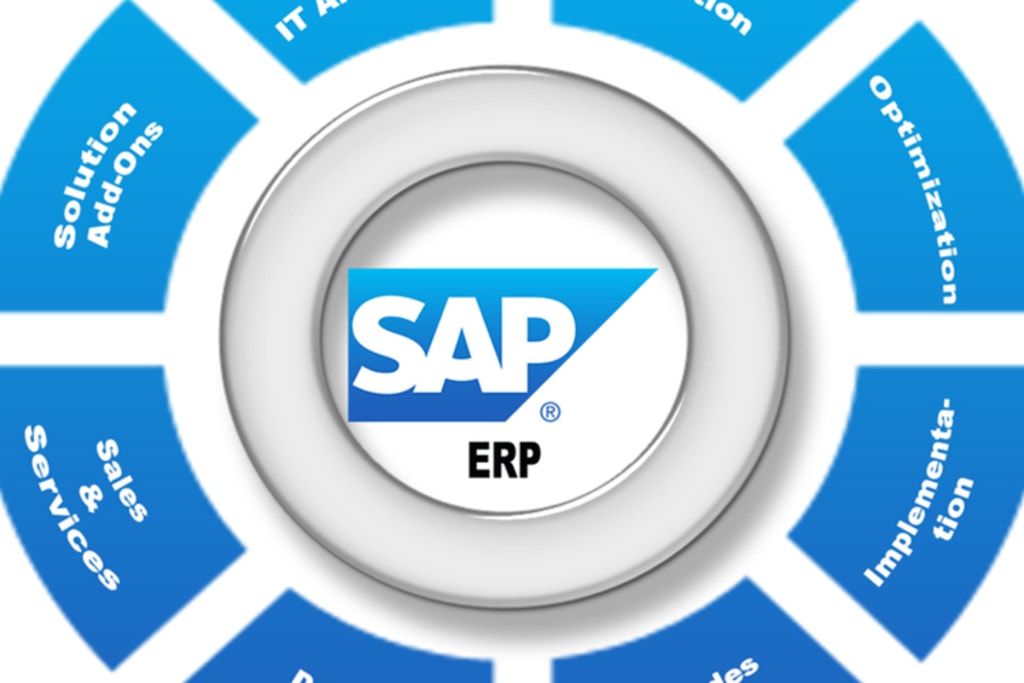SAP ERP and CRM systems for Resource management
SAP and management systems

SAP has multiple ERP and CRM systems for enterprise resource management. The main helper that economists rely on is information technology and systems.
One of the undisputed leaders in the production of enterprise software applications is SAP. This company helps organizations simplify their processes and generate new opportunities for innovation and growth. It has been present on the Bulgarian market for more than 15 years.
SAP is a German company, Europe's largest software provider, headquartered in Waldorf, Germany. The company is known worldwide for its SAP ERP software . SAP products focus on Enterprise Resource Planning (ERP). The main product of the company is SAP ERP. The current version is SAP ERP 6.0 and is part of the SAP Business Suite, which contains 5 components (including CRM software).
Other major products offered are: the NetWeaver platform, Governance, Risk and Compliance (GRC) solutions, Duet (a joint product with Microsoft), Performance Management solutions and RFID. SAP offers SOA functionality (called Enterprise SOA) in the form of web services integrated into their applications.
While their products have been used mainly by relatively large companies, SAP has already focused its efforts on small and medium-sized enterprises with its SAP Business One and SAP Business All-in-One products.
According to official data, SAP has more than 100,600 installations serving more than 41,200 companies in more than 25 industries and more than 120 countries.
What is SAP ERP for?
What and how this type of software can be useful for us. SAP ERP is software that includes the key business functions of an organization. The latest version (SAP ERP 6.0) was provided in 2006.
The business processes included in SAP ERP are operational (sales and distribution, material management, production planning, performance logistics, and quality management), financial (financial accounting, accounting management, financial supply management) and human resources.
SAP ERP consists of several modules, including marketing and sales utilities, service field, product design and development, inventory production and control, human resources, finance and accounting. SAP ERP collects and combines data from individual modules to provide the company or organization with enterprise resource planning.
Implementation of the SAP ERP system
Effective implementation of SAP's ERP system can lead to many benefits. Integration is the key to this process. In general, the level of data integration of the company is highest when the company uses one operator to implement all modules of the system.
The company may decide to integrate the software at a certain level, but this depends on the company's experience in installing the system and the extent to which the package allows users to integrate the various modules.
It is estimated that software, hardware and consulting costs for large companies can easily exceed $ 100 million (from about $ 50 million to $ 500 million). They can also spend between $ 50 million and $ 100 million to upgrade.
Full implementation of all modules can take years, which also contributes to the final cost. Medium-sized companies (less than 1,000 people) are more likely to spend about $ 10 million to $ 20 million at most, and small businesses are less likely to need a fully integrated SAP ERP system unless they are likely to become medium and then the same information applies as to a medium sized company.
Independent studies show that the cost of implementing and maintaining an SAP system can vary significantly depending on the organization. For example, the SAP tool model may need to be customized to adapt to a particular company's business process and may need to be developed and maintained.
Others point out that there can be a return on investment only when there has been both a sufficient number of consumers and a sufficient frequency of use of the products. Implementing the system itself can require a lot of time and resources.
See Also: Password protect dropbox folder
SAP ERP software has both advantages and disadvantages that we will learn about. Some of the advantages are:
allows for easier global integration (barriers to exchange rates, language, and culture;
can be overcome automatically);
upgrades are made only once, and are implemented throughout the company;
provides real-time information, reducing the possibility of errors;
can lead to a more efficient work environment for employees;
operators have knowledge and experience on how best to build and implement the system;
the user interface is completely customizable and allows end users to determine the operating structure of the product, etc.
Disadvantages:
the relationship is defined by a contract and is dependent on the operator - the contract may include one operator of the company and until it expires it may not be possible to change if the cost of replacement is too high;
lack of flexibility - the package may not fit the company's model and customization can be quite expensive;
return on investment can take a long time to make a profit;
always implement the software in the company, there is a risk of failure.





Comments
There are no comments for this story
Be the first to respond and start the conversation.